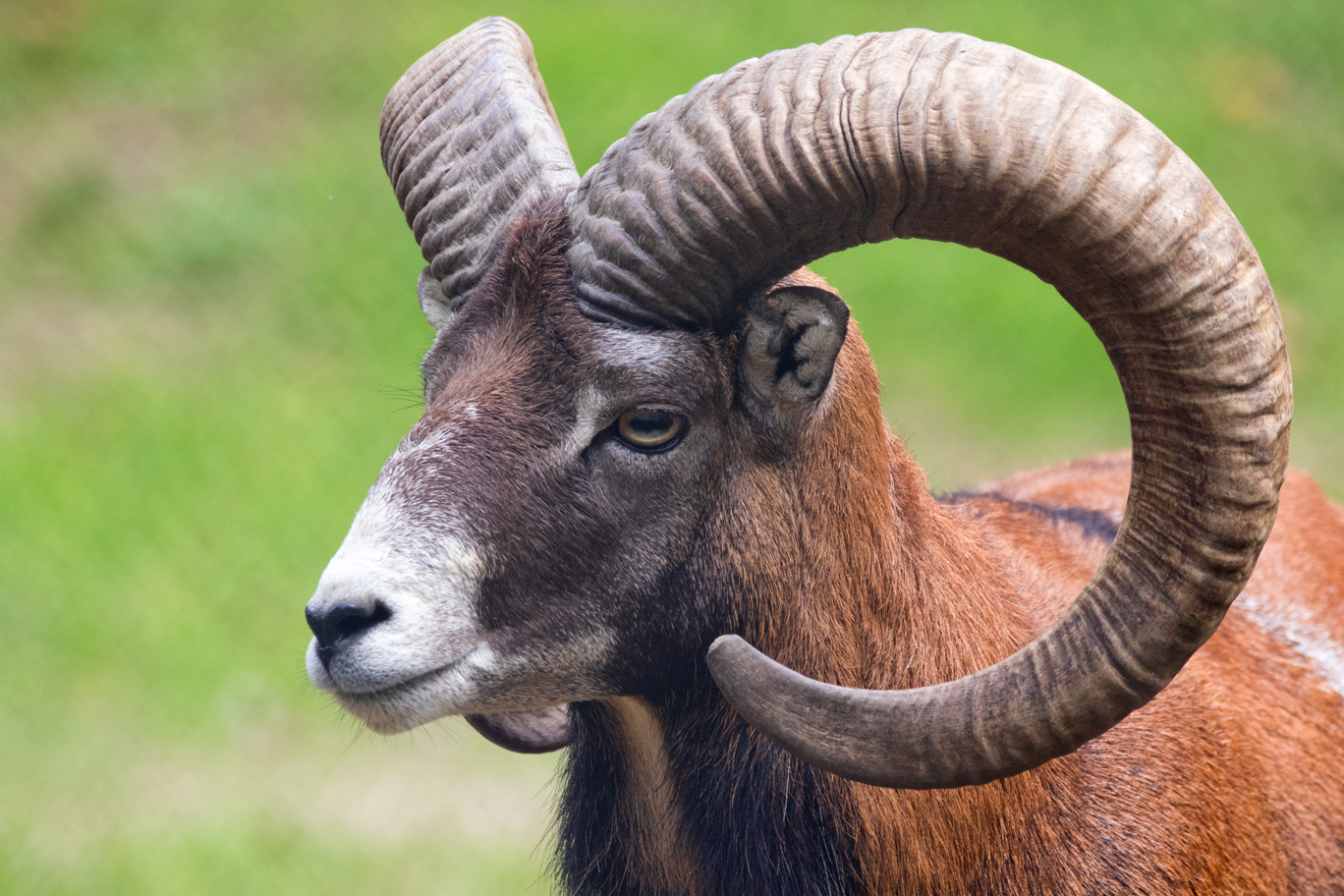European Mouflon
(Ovis aries musimon)
The Trophy
Corsican Mouflon from Corsica show pronounced morphological and genetic differences. Rams from the Cintobergen usually have a more homonymous con guration with converging or parallel horn growth direction and in comparison to the largest spread, one lower spread between the tips of the horns. Those from Bavella exhibit a greater resemblance to Armenian mouflon (O. gmelini gmelinii). The tips of the horns converge inwards and backwards (supra-cervical).
On the European mainland, mouflon was already hybridized by the late 19th century, to improve the quality of the trophy (Tesdorf 1910). Although most of the hybridisation experiments were carried out secretly, a few are documented. For example, cross breeding Wallachian sheep breeds. The ram of these breeds have one direction of horn growth that goes upwards and sideways, meaning it is therefore heteronymous. Some authors mention the use of the grey horned heidschnuck sheep and even write of wild and domesticated Asian sheep breeds. Descendants from these cross breeds were brought to other areas where there was established mouflon stocks or were used to build up new stocks. In Europe, these crossbreeds have resulted in two main configurations of horns. The original homonymous configuration is due to the endemic moufl on from Corsica and Sardinia. Here, the basic growth pattern is either convergent or parallel, and the distance between the tips of the horns is relatively low in comparison to the largest spread. The second shape of horn is strongly related to the Argali sheep with a heteronymous horn coil and thus divergent tubes. Where the spread between the tips of the horns is also the largest spread, and where the tips of the horns will always face outward. Of course, there are many intermediate forms.
Mouflon trophies, which are measurable and evaluated according to all parameters, are considered typical. Atypical horn tube formation, such as asymmetry, a horn bow diameter that is too small or too big or growing, can lead to it being excluded from the evaluation - or being punished with deductions.
Trophy Points Required
|
Phenotype |
Bronze |
Silver |
Gold |
|
Introduced European Mouflon |
185 |
195 |
205 |
|
Tyrrhenian Mouflon |
|
|
|
Copyright © 2023 CIC UKTEB. All content, imagery and rights belong to the International Council for Game & Wildlife Conservation United Kingdom Trophy Evaluation Board (CIC UKTEB)


